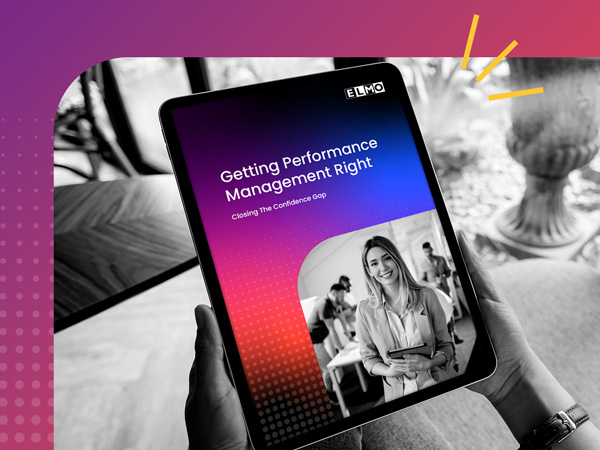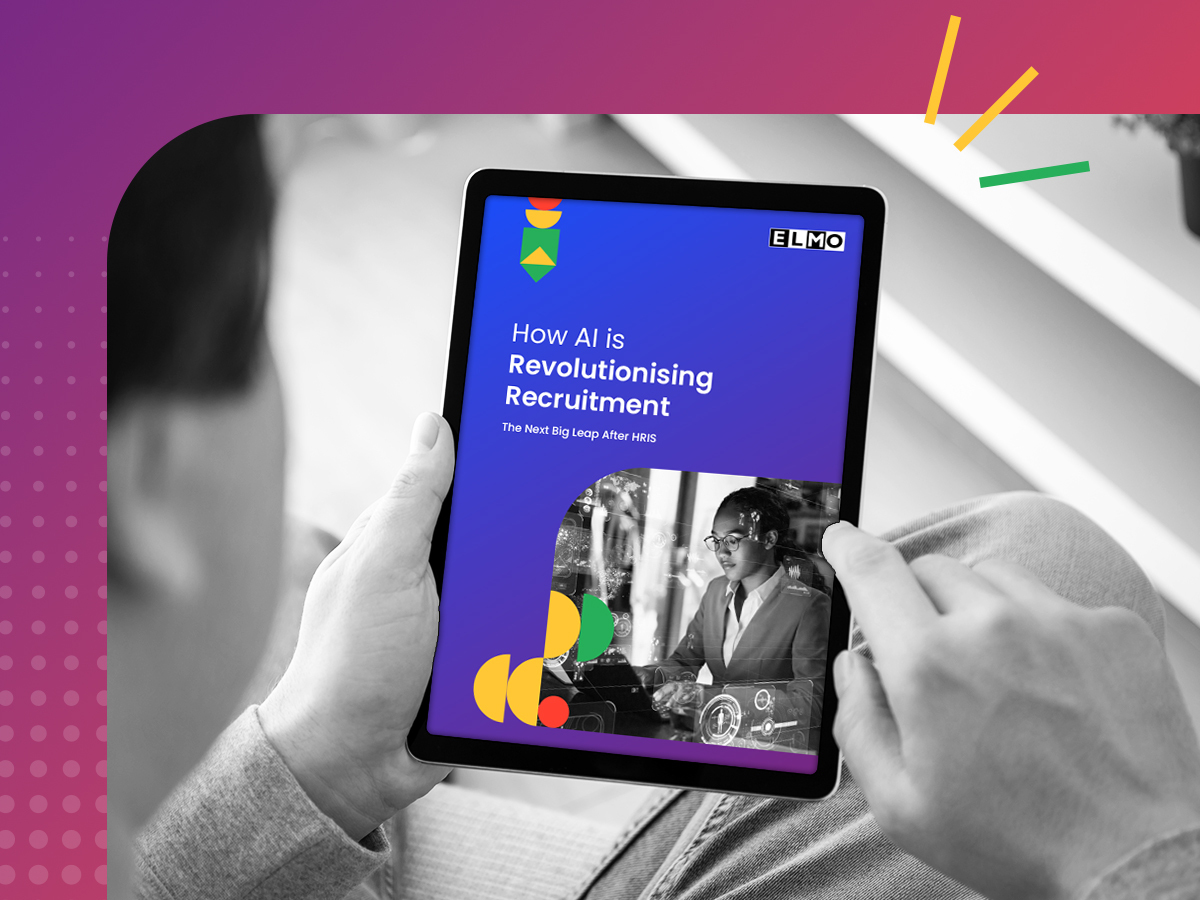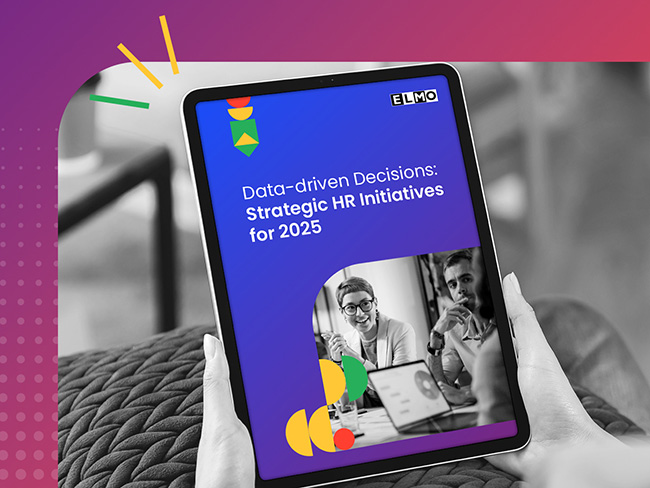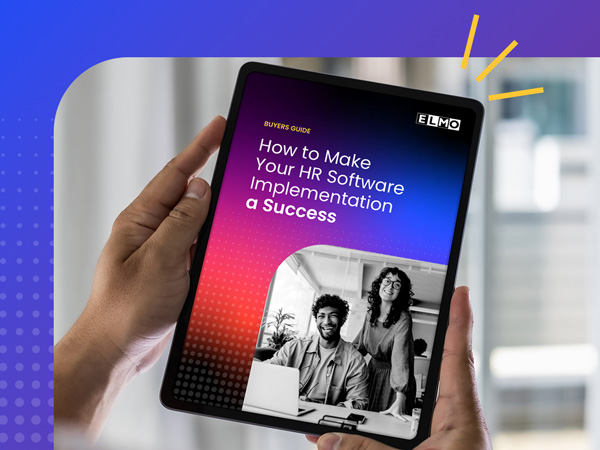Building Internal Talent Marketplaces
After a tumultuous few years of lockdowns and restrictions, many business leaders have begun forging ahead with their sights set on a post-pandemic recovery. But across Australia and New Zealand, there is a major obstacle holding employers back.

As a result, despite the lifting of lockdowns and most COVID-19 regulations, a sense of uncertainty remains in 2023. The fear of a recession still looms, forcing many organisations to proceed with caution.
The surging appetite for learning and development
The past three years have ignited a passion for learning. For many workers, it was the realisation that their skills may not be evolving as quickly as the industry they’re in and if they fail to keep pace, they risk being out of a job in the future.
Even for those who felt secure in their occupations, the pandemic was a catalyst for contemplation. According to data from the latest Hays Salary Guide, a significant portion of respondents surveyed in Australia and New Zealand undertook some sort of learning outside of their workplace in the last 12 months. This indicates that employees are being proactive in their upskilling, perhaps acknowledging that the speed of the pandemic-induced digitalisation is only a sign of things to come.
Outside of work in the last 12 months…
What’s more, training is a crucial aspect of the Employee Value Proposition (EVP). The Hays research found that more than half of employees (57%) will consider what training opportunities are available when considering a new role. Slightly fewer (52%) will look for opportunities for ongoing learning and development.
ELMO’s most recent Employee Sentiment Index report also highlights the desire for learning. In both New Zealand and Australia, opportunities for career development and professional learning ranked higher than well-being initiatives and diversity among employees/senior leadership. Respondents also said they care more about learning and development than online or word-of-mouth reviews of the leadership team.
Employees’ most important factors when thinking about choosing a new employer
Factors like remuneration and flexibility will always be important, but in an ultra-competitive talent market, investing in learning and development is a smart choice. Not only does it strengthen the total package employers can use to attract new talent, it demonstrates a genuine commitment to current employees and their long-term careers.
The career path is no longer as linear as it once was – especially for younger generations. The career path is no longer as linear as it once was – especially for younger generations.
Taking an experience-based approach to job moves, rather than focusing on climbing the hierarchy, supports cross-functional mobility and reduces the likelihood of staff becoming siloed in their roles. Learning and development is crucial for this approach, as it facilitates the re-skilling or cross-skilling of employees in a strategic and organised way.
Combining employees’ interests with business needs
While interest is important, in reality, job moves shouldn’t be driven by an employee’s career aspirations alone. Making this approach work requires organisations to have a detailed understanding of their current capability and where their gaps lie.
It’s said that 1% of a typical work week is all the time employees have to focus on training and development. Clearly, time is an issue. Employees must be able to carve out enough time for learning if organisations want their strategic upskilling initiatives to be successful.
What motivates employees to learn?
An effective L&D strategy requires a top-down and bottom-up approach. Top-down tells L&D practitioners what the business needs, while bottom-up considers what employees want. And according to research, what they want is tied directly to their personal careers.
According to the 2023 LinkedIn Learning Report, employees are most motivated if the learning helps them to stay up to date in their field, is personalised to their interests and career goals, or helps them to get another job internally, be promoted, or get closer to reaching their career goals.
Therefore, if an organisation offers – or worse still, mandates – a training course that doesn’t align with an employee’s interests or career goals, it’s not likely to have a successful outcome. For learners to be and remain engaged, and most importantly, implement the skills learnt, the content should speak to them as individuals. These conversations are a great opportunity to get a better understanding of career aspirations and how the organisation can help employees move toward their goals.
Why learning & development is now a business imperative
In the past L&D has been seen as a perk or an added extra but for leading businesses, this is no longer the case. They recognise that using learning in a strategic way is a powerful weapon in their arsenal, making their business more resilient to external pressures and quicker to adapt to a changing landscape. The decision to double down on learning over the past two years, rather than scale back, has set high-performing businesses apart from the rest.
Skills shortage hits SMEs hard
It’s a similar story in New Zealand. Earlier this year, the Quarterly Survey of Business Opinion by the NZIER reported a high proportion of firms having difficulty in finding both skilled and unskilled labour, as well as a peak in the number of businesses reporting labour as the primary constraint on their business. As a result, organisations were feeling intense cost pressures from a rise in wage growth.
All in all, the data drives home the eye-watering cost and difficulty in recruiting. While external hires will always be necessary to bring fresh thinking and perspectives into a business, maximising the skillset of existing employees can prove more cost-effective in the long term.
The rise of the internal talent marketplace
Implementing an internal talent marketplace is not a new concept. But for many organisations, it’s been on the back burner as a ‘nice to have’ rather than a necessity. Now, it’s clear that having a structured, robust system of internal skills matching in place can provide organisations with a commercial edge.
Developing an internal talent marketplace is a big job. When done well, it requires involvement from a variety of different stakeholders such as HR, L&D practitioners, talent acquisition teams, department heads, and business leaders.
What is an internal talent marketplace (ITM)?
Internal talent marketplace refers to a system of matching existing employees’ skill sets with open roles or projects to improve the visibility of opportunities within the business and allow greater internal mobility. ITMs can take the form of specially built platforms that use AI to match employee profiles with roles or be facilitated manually through a company intranet or via spreadsheets.
Implementing an internal talent marketplace requires identifying and documenting the existing skills across an entire organisation and the skill requirements of any open roles or projects. Using both sets of data allows users to identify potential internal moves or opportunities for cross-skilling / upskilling.
Skills mapping is an essential part of building an internal talent marketplace and the process has a number of benefits. It gives organisations a black-and-white view of where their talent gaps are, and forces department leaders to pinpoint the skills required both now and in the future. Having a clear roadmap allows L&D professionals to align training programs with organisational goals, making it easier to demonstrate return on investment and deliver tangible benefits to the business.
It shifts the mindset from hiring based on roles or titles to hiring for skills. Improvising the visibility of skills and opportunities can also be positive for employees.
Too often, organisations approach career development as a passive process – it’s something employees have to wait for. But an internal talent market is all about identifying potential within an organisation and empowering employees to take the next step by making the opportunities as visible as possible. As a result, employees see their current employer as a place to build their career, rather than one job in a long line of jobs.
Plus, offering employees a diverse range of career opportunities can be a huge retention driver, even in a competitive, money-driven talent market. Of course, salary will always be attractive but learning and development have the power to amplify loyalty and retain employees in the long term.
Upskilling existing staff is often a more cost-effective option than recruitment – especially for niche and specialist skills. Successfully developing an internal marketplace can therefore become an effective way to reduce turnover and hiring costs.
It also reduces the reliance on the external talent market, an issue that’s come to light after the closure of the international borders. Relying heavily on acquiring skills through external hiring means you’re at risk when the talent market tightens, as it has done in Australia and New Zealand.
ELMO’s 2023 HR Industry Benchmark Report, which was released in March this year, found the cost to hire new employees is just over $8,000 per worker in Australia and $5000 in New Zealand. On average, it takes 20 days to hire a new employee. It’s clear that reducing the reliance on the external talent market has never been more important for a business’s bottom line.
Where to start: skills mapping
Beginning the process of skills mapping can feel daunting, but essentially, it aims to answer three key questions:
- Where is the business/industry heading?
- What skills does the business require to get there?
- What skills do we already possess?
While few people predicted a global pandemic to be the catalyst, the adoption of remote working is here to stay, and increased digitalisation and use of cloud technology had already been forecast by experts. The pandemic simply accelerated that trend. Taking a forward-thinking, predictive approach, as long as it’s underpinned by solid research, is a good way for businesses to stay one step ahead.
Using the automotive industry as an example, the demand for sustainability will continue and therefore it makes sense to invest in the skills required to design and produce electric vehicles. Similarly in the banking sector, the adoption of open-source banking, crypto, and alternative currencies requires new and emerging skill sets.
Aligning capability needs with the business’s short-term strategic goals is a slightly more black-and-white process. Work backwards from each department’s KPI or quarterly/yearly goal to understand the skills required to deliver the objectives. They may already have the skills required – or in fact too many employees with the same skills. These skills may be fairly easy to recruit and so perhaps there is potential to upskill these team members into more hard-to-fill areas.
Putting pen to paper
Or perhaps more accurately in 2023, putting type to screen. Recording and collating the skills information is one of the hardest elements to consider and it will vary depending on the size of the organisation and resourcing available.
For those using an internal talent marketplace platform, the system will be configured to make it as easy as possible to input an employee’s profile and tag the skills they possess.
However, more budget-friendly (yet more time consuming) methods are available. Smaller organizations, with fewer than 100 staff, may use an Excel sheet to categorize skills and track each employee’s proficiency.
Manager-led evaluation
One-up managers are tasked with evaluating the proficiency of skills for team members.
Pros: Better objectivity if genuinely based on past performance. Likely to be more time efficient. Cons: Potential for bias. What constitutes “proficient” may vary between managers.
Self-evaluation
Employees are asked to rank their proficiency levels across various skill sets.
Pros: Not impacted by manager bias. Able to rate proficiency on skills that they may possess but not use in their current role. Directly involves employees in the skills mapping process which can lead to better buy-in.
Cons: Ranking may be skewed by own perception of proficiency, e.g. over or under-estimating.
Map out the journey from A to B
The aim here is to carve out pathways to upskill employees into more niche or hard-to-fill roles. Look for natural progression opportunities and consider adjacent or ‘stepping-stone’ skills. Adjacent skills are those related to a skill or competency an employee already has or could be easily developed. These skills, not always specified in job descriptions, are crucial for employees to better understand and excel in their roles.
Workers boost job performance, preparing for promotions, lateral moves, or job changes by developing skills aligned with their current roles.
Consider employee interest ratings to identify alignment between career goals and business needs, keeping the pathways in mind. A win-win for employees and the business, fostering lasting motivation, engagement in learning, and success in their new roles.
Consider your content
To guide employees from point A to B, determine the learning type needed. Organizations can utilize in-house experts or external resources, like a course library provider, for proficient leaders in their business programs.
Programs aren’t the only way to learn. On-the-job or project-based learning, along with informal methods like mentoring, can facilitate upskilling. This is especially true if an employee has a foundational understanding of the skillset but lacks practical experience. Similarly, they might already possess adjacent skills that will set them up for on-the-job learning.
Designing learning content is often one of the most time-consuming elements of an L&D professional’s role. Pre-made content empowers organizations and departments to tailor and adjust it to their specific needs, making it a valuable tool. Personalized learning is here to stay, especially for younger generations who crave custom experiences.
Our recommendation
Invest in the development of your employees and efficiently roll out training to your organisation with ELMO’s suite of learning solutions. With access to eLearning from anywhere and a course library covering a range of compliance and soft skill courses, developing your employees has never been easier. ELMO’s Learning Management Solution includes access to over 400+ eLearning online courses which can be customised to meet business objectives. The LMS also fully integrates with the entire ELMO cloud HR & payroll suite.
Communication is key
Use the skills matrix to initiate career discussions with employees, exploring their goals and envisioning their next career steps. Discuss upskilling/reskilling options with identified employees, ensuring alignment with their career goals.
Pushing employees into unwanted roles wastes time, money, and engagement.
When a talent marketplace works, employees thrive and become vocal advocates for the company. Encourage employees to share their stories, through internal and external storytelling. Empower employees to share their internal moves on social media, becoming brand ambassadors.
Beyond the employee experience, consider what other measures to track. L&D professionals have historically struggled to secure budget due to difficulty proving ROI. When thinking about an internal talent marketplace, ask: what does success look like? Is it an increase in the number of internal hires or the number of employees suitable for each critical role? Perhaps it’s improving the organisation’s bench strength or reducing the cost of recruitment? Tracking key metrics like employee retention, engagement, and skill development is crucial to proving L&D’s value and justifying its budget.
Internal talent metrics to consider
- Number of employees suitable for each critical role
- Cost of upskilling/training vs cost to hire
- Bench strength (an organisation’s ability to fill critical roles with internal candidates)
- Percentage of positions filled internally
- Turnover rate
5 key questions to consider
Does the company culture support internal mobility?
Celebrate team transitions, don’t hide them! Employees might fear suggesting career changes, even if they want them. Employees needing career guidance may leave if they feel unsafe discussing it with their manager. Managers should champion learning, even if it means losing them to other teams. Not all managers prioritize staff growth over immediate needs. Fostering a learning mindset is key to building a culture of internal mobility.
Do you have adequate buy-in?
It’s important to make a strong business case for why an internal talent marketplace is worth investing in. Analyze costs and metrics to calculate the return on investment in your hiring strategy. Beyond the numbers, also look at qualitative data from things like engagement surveys or exit interviews. Are employees leaving because they are lacking career or development opportunities? Has engagement dropped because their career is going nowhere?
Do the opportunities reflect employees’ interests?
Don’t underestimate the importance of aligning learning opportunities with individual career goals. Employees who lack a genuine interest in their training are likely to lose focus, drop out, or switch jobs quickly.
If there’s no interest among existing employees, recruiting through the external talent market is likely to result in a better outcome. Alternatively, there may be opportunities to recruit more junior employees who require upskilling to get to the desired level. What’s important is whether those candidates have a genuine desire to learn.
Do you have adequate training programs in place?
Designing learning programs and creating content can be a hugely time-consuming job. Starting an internal marketplace? Consider time and resources needed for learning programs to upskill/reskill employees. Invest in training options like course libraries or expert sessions based on budget and needs.
How will you track learning and development?
Using offline tools like spreadsheets can be extremely time-consuming and puts the burden of monitoring progress on L&D. In 2023, this needn’t be the case. Cloud-based technology removes the manual processes by automatically tracking progress and providing prompts to encourage learners who might have stalled. An LMS can award learners with badges for completing learning and even offer gamification.
If you are using an LMS already, ask if is it up to the job? Or is it worth investigating other providers?
ELMO Software is a cloud-based solution that helps thousands of organisations across Australia, New Zealand and the United Kingdom to effectively manage their people, process and pay. ELMO solutions span the entire employee lifecycle from ‘hire to retire’. They can be used together or stand-alone, and are configurable according to an organisation’s unique processes and workflows. Automate and streamline your operations to reduce costs, increase efficiency and bolster productivity.
 HR Core
HR Core 









